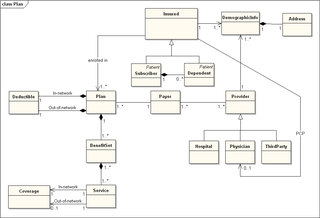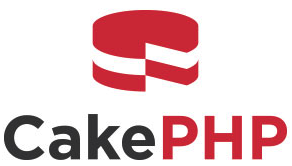Related Research Articles
Object–relational mapping in computer science is a programming technique for converting data between a relational database and the heap of an object-oriented programming language. This creates, in effect, a virtual object database that can be used from within the programming language.
Java Data Objects (JDO) is a specification of Java object persistence. One of its features is a transparency of the persistence services to the domain model. JDO persistent objects are ordinary Java programming language classes (POJOs); there is no requirement for them to implement certain interfaces or extend from special classes. JDO 1.0 was developed under the Java Community Process as JSR 12. JDO 2.0 was developed under JSR 243 and was released on May 10, 2006. JDO 2.1 was completed in Feb 2008, developed by the Apache JDO project. JDO 2.2 was released in October 2008. JDO 3.0 was released in April 2010.
In software, a data access object (DAO) is a pattern that provides an abstract interface to some type of database or other persistence mechanism. By mapping application calls to the persistence layer, the DAO provides data operations without exposing database details. This isolation supports the single responsibility principle. It separates the data access the application needs, in terms of domain-specific objects and data types, from how these needs can be satisfied with a specific DBMS.
Hibernate ORM is an object–relational mapping tool for the Java programming language. It provides a framework for mapping an object-oriented domain model to a relational database. Hibernate handles object–relational impedance mismatch problems by replacing direct, persistent database accesses with high-level object handling functions.
ADO.NET is a data access technology from the Microsoft .NET Framework that provides communication between relational and non-relational systems through a common set of components. ADO.NET is a set of computer software components that programmers can use to access data and data services from a database. It is a part of the base class library that is included with the Microsoft .NET Framework. It is commonly used by programmers to access and modify data stored in relational database systems, though it can also access data in non-relational data sources. ADO.NET is sometimes considered an evolution of ActiveX Data Objects (ADO) technology, but was changed so extensively that it can be considered an entirely new product.
Object–relational impedance mismatch creates difficulties going from data in relational data stores to usage in domain-driven object models. Object-orientation (OO) is the default method for business-centric design in programming languages. The problem lies in neither relational nor OO, but in the conceptual difficulty mapping between the two logic models. Both are logical models implementable differently on database servers, programming languages, design patterns, or other technologies. Issues range from application to enterprise scale, whenever stored relational data is used in domain-driven object models, and vice versa. Object-oriented data stores can trade this problem for other implementation difficulties.
A web framework (WF) or web application framework (WAF) is a software framework that is designed to support the development of web applications including web services, web resources, and web APIs. Web frameworks provide a standard way to build and deploy web applications on the World Wide Web. Web frameworks aim to automate the overhead associated with common activities performed in web development. For example, many web frameworks provide libraries for database access, templating frameworks, and session management, and they often promote code reuse. Although they often target development of dynamic web sites, they are also applicable to static websites.

In software engineering, a domain model is a conceptual model of the domain that incorporates both behavior and data. In ontology engineering, a domain model is a formal representation of a knowledge domain with concepts, roles, datatypes, individuals, and rules, typically grounded in a description logic.
In software engineering, the active record pattern is an architectural pattern. It is found in software that stores in-memory object data in relational databases. It was named by Martin Fowler in his 2003 book Patterns of Enterprise Application Architecture. The interface of an object conforming to this pattern would include functions such as Insert, Update, and Delete, plus properties that correspond more or less directly to the columns in the underlying database table.

NHibernate is an object–relational mapping (ORM) solution for the Microsoft .NET platform. It provides a framework for mapping an object-oriented domain model to a traditional relational database. Its purpose is to relieve the developer from a significant portion of relational data persistence-related programming tasks. NHibernate is free and open-source software that is distributed under the GNU Lesser General Public License. NHibernate is a port of Hibernate.

CakePHP is an open-source web framework. It follows the model–view–controller (MVC) approach and is written in PHP, modeled after the concepts of Ruby on Rails, and distributed under the MIT License.
iBATIS is a persistence framework which automates the mapping between SQL databases and objects in Java, .NET, and Ruby on Rails. In Java, the objects are POJOs. The mappings are decoupled from the application logic by packaging the SQL statements in XML configuration files. The result is a significant reduction in the amount of code that a developer needs to access a relational database using lower level APIs like JDBC and ODBC.
A data access layer (DAL) in computer software is a layer of a computer program which provides simplified access to data stored in persistent storage of some kind, such as an entity-relational database. This acronym is prevalently used in Microsoft environments.
Jakarta Persistence is a Jakarta EE application programming interface specification that describes the management of relational data in enterprise Java applications.
The Doctrine Project is a set of PHP libraries primarily focused on providing persistence services and related functionality. Its most commonly known projects are the object–relational mapper (ORM) and the database abstraction layer it is built on top of.
DataMapper is an object-relational mapper library written in Ruby that follows the active record pattern even though the name implies it follows the data mapper pattern. While DataMapper 1 may not have achieved total decoupling between object and database suggested by the data mapper pattern, it appears DataMapper 2 intended to change this. The DataMapper 2 project was renamed before launch and was released as Ruby Object Mapper (ROM) in August 2013.
DataNucleus is an open source project which provides software products around data management in Java. The DataNucleus project started in 2008.
Dapper is an object–relational mapping (ORM) product for the Microsoft .NET platform. It provides a framework for mapping an object-oriented domain model to a traditional relational database. Its purpose is to relieve the developer from a significant portion of relational data persistence-related programming tasks. Dapper is free as open source software that is distributed under dual license, either the Apache License 2.0 or the MIT License.
References
- ↑ Fowler, Martin (2003). Patterns of enterprise application architecture. Addison-Wesley. ISBN 978-0-321-12742-6.
- ↑ "What's the difference between Active Record and Data Mapper?".
- ↑ "Atlas ORM – Atlas".
- ↑ "Doctrine2 and ActiveRecord – Doctrine2". Doctrine2. Archived from the original on 2013-07-21. Retrieved 2013-04-02.
- ↑ "Cycle ORM – Cycle". GitHub .
- ↑ "stack overflow – DBIx".